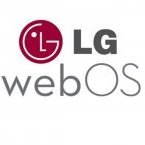By
News Reporter
Selected Finalists to Receive Funding to Develop and Launch
Their Gaming or Lifestyle App on LG Smart TVs
SEOUL, July 9, 2024 — LG Electronics (LG) announced a call for participants for its annual global webOS hackathon, with a focus this year on AI-based solutions and gaming services. Developers worldwide are invited to apply and submit their apps for a chance to win a significant monetary prize along with the opportunity to present onstage to LG executives in Seoul, South Korea, this September.
As a web-centric platform with an easy-to-use Smart TV software development kit, webOS enables developers to create third-party services and apps for millions of homes worldwide. The platform offers developers the tools to create apps and services that engage media, devices, security, networking, Smart TV functionalities and more. Through this hackathon, developers will have the opportunity to build and launch their app on LG Smart TVs, directly reaching consumers with their business.
Powering LG Smart TVs, including the award-winning LG OLED TV, for over a decade, webOS platform has been acclaimed as a friendly user interface, with easy navigation and customization to provide users with the premium entertainment experience expected from LG products. Now, with an always-growing ecosystem of global partners, the webOS platform is set to drive the next generation of service innovation.
In addition, LG is committed to expanding the webOS ecosystem by partnering with leaders in the gaming industry. This collaboration aims to offer customers a wide range of gaming services tailored to diverse preferences and interests, while enhancing the gaming capabilities of its exceptional OLED TVs. LG Smart TVs in global markets now feature an increasing array of cloud gaming services and family-friendly games.
To participate in the hackathon, applicants will need to submit their applications
link hidden, please login to view. Applications for the hackathon are now open and will close on July 26. Following the application process, participants will be invited to a webinar to learn more about the API and hackathon details. Finalists will be notified by mid-September.
For more information about the hackathon, including detailed event schedules with terms and conditions, visit .
The hackathon will begin with a virtual webinar in early July. Participants will choose to create a game or lifestyle service app using either the Web or Flutter framework, with the opportunity to earn additional merit points for utilizing AI. The app, scenario and demo video must be submitted by August 26. Selected winning developers will then be invited to Seoul to present their ideas in front of top LG executives on September 27.
Cash prizes will be awarded to the top three winners of the hackathon, with a USD 100,000 Grand Prize for first place, USD 80,000 for second place and USD 50,000 for third place. The winners will also receive technical support leading up to the rollout of their app as well as on-device promotional opportunities after the launch. Winning apps must be ready for release on the LG Content Store by the end of June 2025.
“LG webOS Hackathon 2024 aims to attract creators worldwide who are building lifestyle solutions,” said Chris Jo, senior vice president of platform business at LG Home Entertainment Company. “LG is committed to engaging with the gaming community on a global scale, partnering with developers to nurture the next generation of talent using LG’s developer platform.”
# # #





Recommended Posts
Join the conversation
You can post now and register later. If you have an account, sign in now to post with your account.